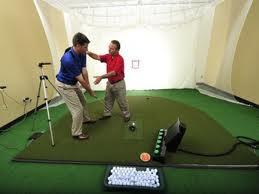
Computer video analysis has certainly made teaching golf easier. It's helped our profession better understand swing mechanics. The computer has allowed us to show the student what we would consider to be proper in his golf swing. The computer can also store and save a students’ video progress over a series of lessons. And certainly the computer has added to the bottom line of what we can charge. However, the computer does not necessarily show what the student is feeling in his golf motion.
A golf instructor must remember that every new student has brought to the lesson a motion that is representative of what they think the swing should feel like in order to hit the ball to the target and in the air. To work on positions in the swing that may look to be more correct on video but don’t allow the student to feel why these positions will help him improve his ball flight are doomed to failure. I call this the computer trap. Computers are great, but understanding the ball flights that certain motions create is key.
A simple and common example might be the student is slicing the ball. Let’s say the students’ club face is shown to be closed at the top of the backswing on the computer. Most of the time if we try and fix the club face at the top while the student has a slicing problem would only worsen the students’ slice. Another might be that the computer shows the student needs a bigger shoulder turn. If the student is already hitting a draw that starts right of target and we try and increase his shoulder turn he would most likely start hooking it. Even a good player can fall into this trap. Let’ say a very good player has been fighting a hook for 3 or 4 weeks and that ball flight is usually very uncommon for him. Let’s say the computer tells us his club face is closing at impact. There might be a lot of reasons why the club face would be closing at impact but remember what the good player is feeling when he is trying to correct the hooking ball flight which most likely would be trying to keep the face open coming down into impact. So if the good player is trying to hold the clubs face more open and the computer says it is closing through impact we have a discrepancy. Most likely you will have to get the good player to release the club to fix his hook. However though, the path the instructor takes to fixing the students problem depends on what the instructor sees as the necessary changes need to cure his feeling of fighting a hook.
Over my 20 years as a teacher, I have encountered many of times the computer and the players’ feels were not on the “same page”. The computer is a very good tool but should never replace the eye of the instructor and his knowledge of certain motions producing certain ball flights. If the instructor never stops asking, “Why is the student swinging that way?” Or “What is the student feeling?” Then the computer will remain a valuable resource.
Source
2008 Southern California PGA Section magazine and PGA internet magazine
